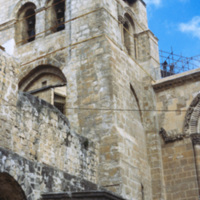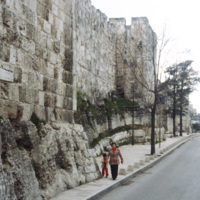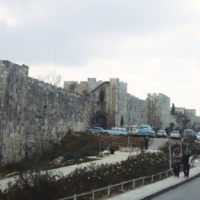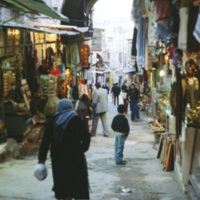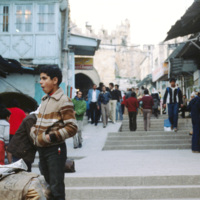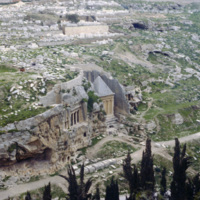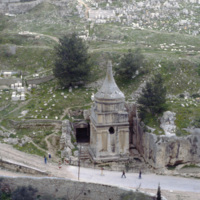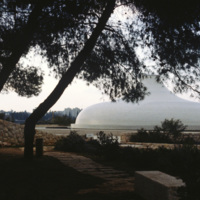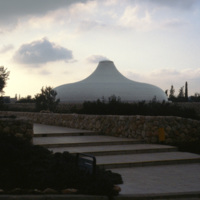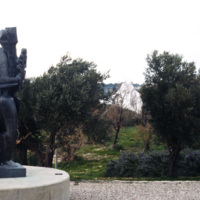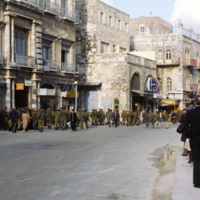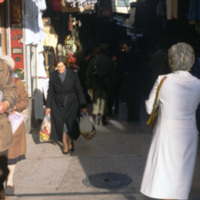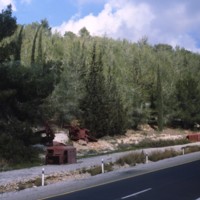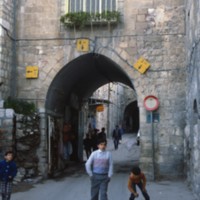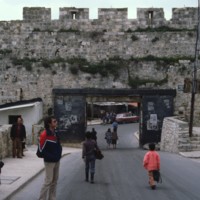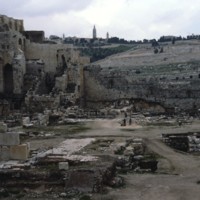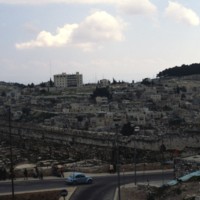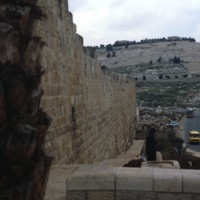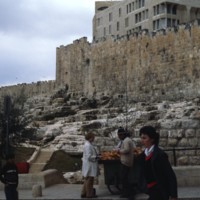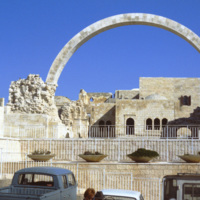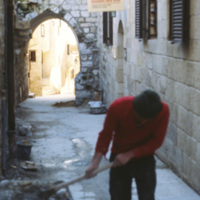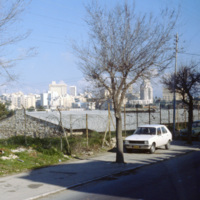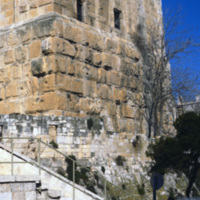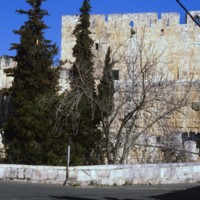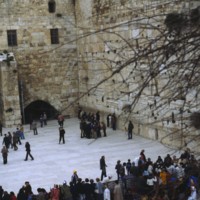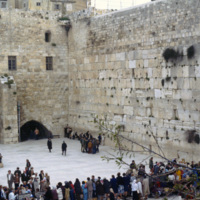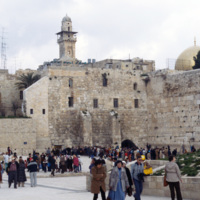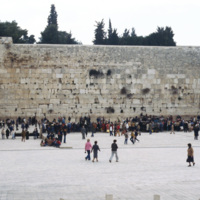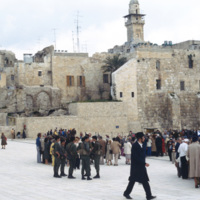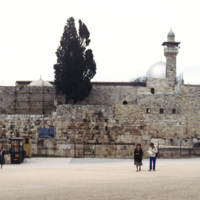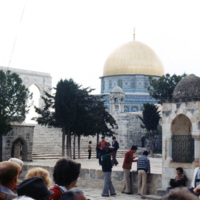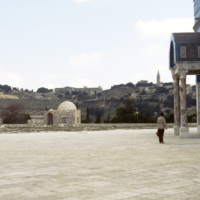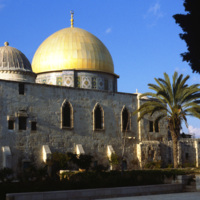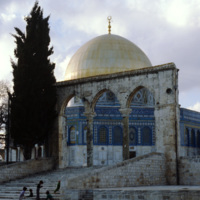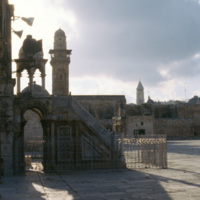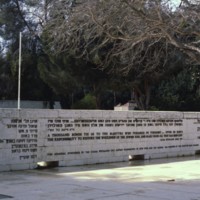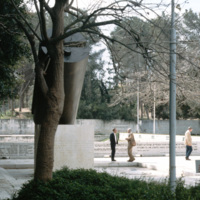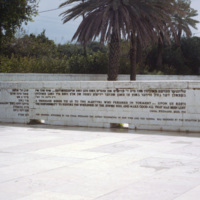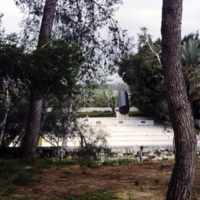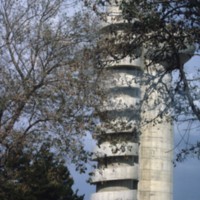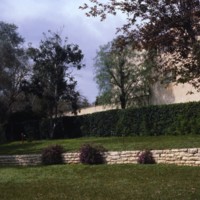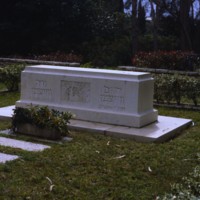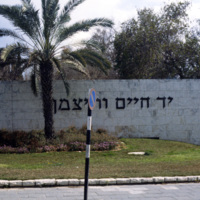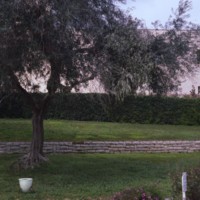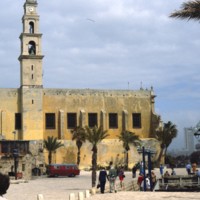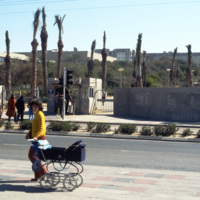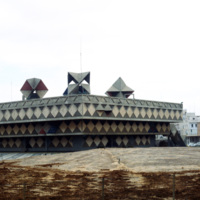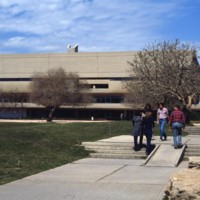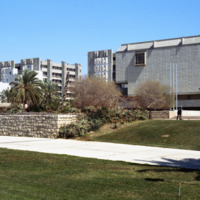Browse Items (1954 total)
Jerusalem: Chruch of the Holy Sepulchre
Tags: architecture, christian, historic, religious buildings
Jerusalem: Old City, South Wall (detail)
Tags: historic, Jaffa Gate, Jewish quarter, old city, south walls
Jerusalem: Old City, South Wall
Tags: historic, Jaffa Gate, Jewish quarter, old city, south walls
Jerusalem: Street Scene at Jaffa Gate
Tags: Jaffa Gate, old city, street scene
Jerusalem: Tomb of Bene Hezir and Tomb of Zechariah
Tags: architecture, classical, doric, ionic, kidron valley, tombs
Jerusalem: Kidron Valley, Absalom’s Pillar
Tags: archeology, cemeteries, historic, tomb
Jerusalem: Shrine of the Book
Tags: architecture, Dead Sea Scrolls, domes, Israel, Modernism, museums
Jerusalem: Shrine of the Book
Tags: architecture, Dead Sea Scrolls, domes, Israel, Modernism, museums
Jerusalem: Israel Museum, Sculpture, Shrine of the Book
Tags: architecture, Dead Sea Scrolls, domes, Israel, Modernism, museums
Jerusalem: Troops at Jaffa Gate
Tags: gates, historic, Jaffa Gate, old city, soldiers
Jerusalem: Truck Chasis from 1948 War on Roadside
Tags: highways, Israel-Arab War, ruins
Jerusalem: Part of St. Stephen’s Gate
Jerusalem: Dung Gate
Tags: Dung Gate, historic, Jerusalem, New City, religious architecture
Jerusalem: Ruins & Mt. of Olives
Jerusalem: New City inside Dung Gate
Tags: Dung Gate, historic, Jerusalem, New City, religious architecture
Jerusale: Eastern Wall toward Mt. of Olives
Jerusalem: Southeast End of the Eastern Wall
Jerusalem: Hurva Synagogue Ruins
Jerusalem: New City
Jerusalem: Phasael Tower (detail)
Tags: archaeology, citadel, Jerusalem, Phasael Tower
Jerusalem: Phasael Tower, Old City
Tags: archaeology, citadel, Jerusalem, Phasael Tower
Jerusalem: Western Wall
Jerusalem: Western Wall
Jerusalem: Western Wall, al’Aqsa Mosque, and the Dome of the Rock
Tags: historic, mosque, pilgrims, religious architecture, tourism
Jerusalem: The Western Wall
Tags: historic, pilgrims, religious architecture, tourism
Jerusalem: The Noble Sanctuary and al’Aqsa Mosque
Tags: Islamic architecture, Jerusalem, mosque, soldiers, tourism
Jerusalem: al’Aqsa Mosque
Tags: Islamic architecture, Jerusalem, mosque
Jerusalem: Tourists at the Dome of the Rock
Jerusalem: Dome of the Rock
Jerusalem: Dome of the Rock
Jerusalem: Dome of the Rock
Jerusalem: al’Aqsa Mosque, View from the Dome of the Rock
Tags: Islamic architecture, Jerusalem, mosque
Rehovot: Memorial to the Holocaust Plaza at the Weizmann Institute of Science
Tags: holocaust memorial, monument, public art
Rehovot: Memorial to the Holocaust at the Weizmann Institute of Science
Tags: holocaust memorial, monument, public art
Rehovot: Memorial to the Holocaust Plaza at the Weizmann Institute of Science
Tags: holocaust memorial, monument, public art
Rehovot: Memorial to the Holocaust at the Weizmann Institute of Science
Tags: holocaust memorial, monument, public art
Rehovot: Koffler Accelerator at the Weizmann Institute of Science
Rehovot: Weizmann House
Tags: dwellings, homes, Israel, Rehovot, Weizmann House
Rehovot: Chaim and Vera Weizmann Grave
Tags: burial site, gravestones, Israel, Rehovot, tombstones, Weizmann
Rehovot: Main Gate at the Weizmann Institute of Science
Tags: Israel, landscape architecture, university, Weizzmann
Rehovot: Weizmann House
Tags: dwellings, homes, Israel, Rehovot, Weizmann House
Jaffa: St. Peter’s Church
Tags: cathedral, religious architecture
Tel Aviv University: Entrance
Bat Yam: Town Hall
Tags: Bat Yam, political buildings, town halls
Tel Aviv University: Sourasky Central Library
Tel Aviv: University, Diaspora Museum
Tags: architecture, Israel, modern, museums, Tel Aviv
